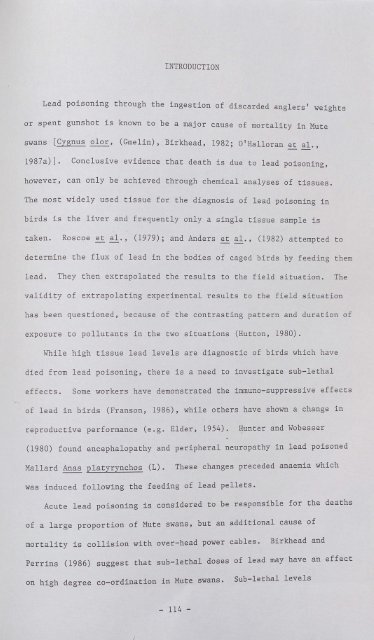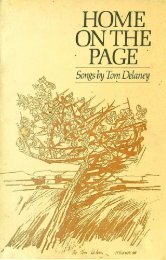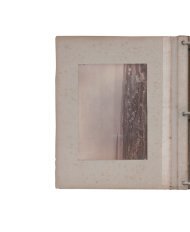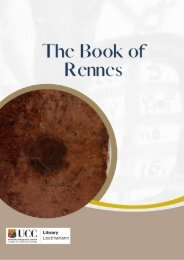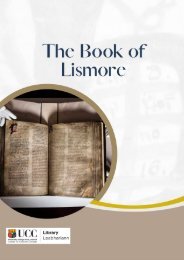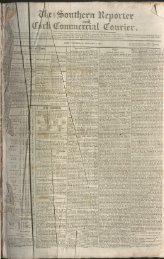Lead Toxicity in Mute Swans
LEAD TOXICITY IN MUTE SWANS Cygnus olor (Gmelin). By JOHN O'HALLORAN A thesis submitted to the National University of Ireland in candidature for the degree of Doctor of Philosophy September 1987
LEAD TOXICITY IN MUTE SWANS
Cygnus olor (Gmelin).
By
JOHN O'HALLORAN
A thesis submitted to the National University of Ireland
in candidature for the degree of Doctor of Philosophy
September 1987
You also want an ePaper? Increase the reach of your titles
YUMPU automatically turns print PDFs into web optimized ePapers that Google loves.
INTRODUCTION<br />
<strong>Lead</strong> poison<strong>in</strong>g through the <strong>in</strong>gestion of discarded anglers' weights<br />
or spent gunshot is known to be a major cause of mortality <strong>in</strong> <strong>Mute</strong><br />
swans [Cygnus olor, (Gmel<strong>in</strong>), Birkhead, 1982; O'Halloran et al.,<br />
1987a)]. Conclusive evidence that death i·s due to lead · · poison<strong>in</strong>g,<br />
however, can only be achieved through chemical analyses of tissues.<br />
The most widely used tissue for the diagnosis of lead poison<strong>in</strong>g <strong>in</strong><br />
birds is the liver and frequently only a s<strong>in</strong>gle tissue sample is<br />
taken.<br />
Roscoe et al., (1979); and Anders et al., (1982) attempted to<br />
determ<strong>in</strong>e the flux of lead <strong>in</strong> the bodies of caged birds by feed<strong>in</strong>g them<br />
lead.<br />
They then extrapolated the results to the field situation. The<br />
validity of extrapolat<strong>in</strong>g experimental results to the field situation<br />
has been questioned, because of the contrast<strong>in</strong>g pattern and duration of<br />
exposure to pollutants <strong>in</strong> the two situations (Hutton, 1980).<br />
While high tissue lead levels are diagnostic of birds which have<br />
died from lead poison<strong>in</strong>g, there is a need to <strong>in</strong>vestigate sub-lethal<br />
effects.<br />
Some workers have demonstrated the immuno-suppressive effects<br />
of lead <strong>in</strong> birds (Franson, 1986), while others have shown a change <strong>in</strong><br />
reproductive performance (e.g. Elder, 1954).<br />
Hunter and Wobesser<br />
(1980) found encephalopathy and peripheral neuropathy <strong>in</strong> lead poisoned<br />
M a 11 ar d A nas p 1 a t yrync h os (L) • These Changes preceded anaemia which<br />
was <strong>in</strong>duced follow<strong>in</strong>g the feed<strong>in</strong>g of lead pellets.<br />
Acute lead poison<strong>in</strong>g is considered to be responsible for the deaths<br />
of a large proportion of <strong>Mute</strong> swans, but an additional cause of<br />
mortality is collision wit h over-h ea d power c ables · Bi.rkhead and<br />
Perr<strong>in</strong>s (1986) suggest that sub-lethal doses of lead may have an effect<br />
on high degree co-ord<strong>in</strong>ation <strong>in</strong> <strong>Mute</strong> swans.<br />
Sub-lethal levels<br />
- 114 -


